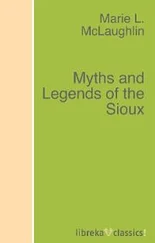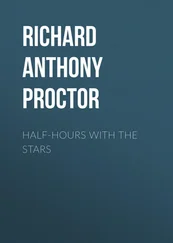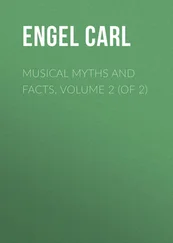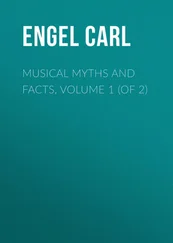Richard A. Proctor - Myths and Marvels of Astronomy
Здесь есть возможность читать онлайн «Richard A. Proctor - Myths and Marvels of Astronomy» — ознакомительный отрывок электронной книги совершенно бесплатно, а после прочтения отрывка купить полную версию. В некоторых случаях можно слушать аудио, скачать через торрент в формате fb2 и присутствует краткое содержание. Жанр: foreign_edu, Физика, на английском языке. Описание произведения, (предисловие) а так же отзывы посетителей доступны на портале библиотеки ЛибКат.
- Название:Myths and Marvels of Astronomy
- Автор:
- Жанр:
- Год:неизвестен
- ISBN:нет данных
- Рейтинг книги:5 / 5. Голосов: 1
-
Избранное:Добавить в избранное
- Отзывы:
-
Ваша оценка:
- 100
- 1
- 2
- 3
- 4
- 5
Myths and Marvels of Astronomy: краткое содержание, описание и аннотация
Предлагаем к чтению аннотацию, описание, краткое содержание или предисловие (зависит от того, что написал сам автор книги «Myths and Marvels of Astronomy»). Если вы не нашли необходимую информацию о книге — напишите в комментариях, мы постараемся отыскать её.
Myths and Marvels of Astronomy — читать онлайн ознакомительный отрывок
Ниже представлен текст книги, разбитый по страницам. Система сохранения места последней прочитанной страницы, позволяет с удобством читать онлайн бесплатно книгу «Myths and Marvels of Astronomy», без необходимости каждый раз заново искать на чём Вы остановились. Поставьте закладку, и сможете в любой момент перейти на страницу, на которой закончили чтение.
Интервал:
Закладка:
13
It is likely that Swedenborg in his youth studied astrology, for in his visions the Mercurial folk have this desire of knowledge as their distinguishing characteristic.
14
It is singular that, when there is this perfectly simple explanation of the origin of the nomenclature of the days of the week, an explanation given by ancient historians and generally received, Whewell should have stated that 'various accounts are given, all the methods proceeding upon certain arbitrary arithmetical processes connected in some way with astrological views.' Speaking of the arrangement of the planets in the order of their supposed distances, and of the order in which the planets appear in the days of the week, he says, 'It would be difficult to determine with certainty why the former order was adopted, and how and why the latter was derived from it.' But, in reality, there is no difficulty about either point. The former arrangement corresponded precisely with the periodic times of the seven planets of the old Egyptian system (unquestionably far more ancient than the system adopted by the Greeks), while the latter springs directly from the former. Assign to the hours of the day, successively, the seven planets in the former order, continuing the sequence without interruption day after day, and in the course of seven days each one of the planets will have ruled the first hour of a day, in the order,—Saturn, the sun, the moon, Mars, Mercury, Jupiter, and Venus. What arbitrary arithmetical process there is in this it would be difficult to conceive. Arithmetic does not rule the method at all. Nor has any other method ever been suggested; though this method has been presented in several ways, some arithmetical and some geometrical. We need then have no difficulty in understanding what seems so perplexing to Whewell, the universality, namely, of the notions 'which have produced this result,' for the notions were not fantastic, but such as naturally sprang from the ideas on which astrology itself depends.
15
The following remarks by the Astronomer-Royal on this subject seem to me just, in the main. They accord with what I had said earlier in my essay on Saturn and the Sabbath of the Jews ('Our Place among Infinities,' 11th essay). 'The importance which Moses attached to it [the hebdomadal rest] is evident; and, with all reverence, I recognise to the utmost degree the justice of his views. No direction was given for religious ceremonial' (he seems to have overlooked Numbers xxviii. 9, and cognate passages), 'but it was probably seen that the health given to the mind by a rest from ordinary cares, and by the opportunity of meditation, could not fail to have a most beneficial religious effect. But, to give sanction to this precept, the authority of at least a myth was requisite. I believe it was simply for this reason that the myth of the six days of creation was preserved. It is expressly cited in the first delivery of the commandments, as the solemn authority (Exodus xxxi. 17) for the command. It is remarkable that at the second mention of the commandment (Deuteronomy v.) no reference is made to the creation; perhaps, after the complete establishment of Jehovistic ideas in the minds of the Israelites, they had nearly lost the recollection of the Elohistic account, and it was not thought desirable to refer to it' (Airy, 'On the Early Hebrew Scriptures,' p. 17). It must be regarded as a singular instance of the persistency of myths, if this view be correct, that a myth which had become obsolete for the Jews between the time of Moses and that of the writer (whoever he may have been) who produced the so-called Mosaic book of Deuteronomy, should thereafter have been revived, and have come to be regarded by the Jews themselves and by Christians as the Word of God.
16
Of course it may be argued that nothing in the world is the result of mere accident, and some may assert that even matters which are commonly regarded as entirely casual have been specially designed. It would not be easy to draw the precise line dividing events which all men would regard as to all intents and purposes accidental from those which some men would regard as results of special providence. But common sense draws a sufficient distinction, at least for our present purpose.
17
This star, called Thuban from the Arabian al-Thúban , the Dragon, is now not very bright, being rated at barely above the fourth magnitude, but it was formerly the brightest star of the constellation, as its name indicates. Bayer also assigned to it the first letter of the Greek alphabet; though this is not absolutely decisive evidence that so late as his day it retained its superiority over the second magnitude stars to which Bayer assigned the second and third Greek letters. In the year 2790 b.c., or thereabouts, the star was at its nearest to the true north pole of the heavens, the diameter of the little circle in which it then moved being considerably less than one-fourth the apparent diameter of the moon. At that time the star must have seemed to all ordinary observation an absolutely fixed centre, round which all the other stars revolved. At the time when the pyramid was built this star was about sixty times farther removed from the true pole, revolving in a circle whose apparent diameter was about seven times as great as the moon's. Yet it would still be regarded as a very useful pole-star, especially as there are very few conspicuous stars in the neighbourhood.
18
Even that skilful astronomer Hipparchus, who may be justly called the father of observational astronomy, overlooked this peculiarity, which Ptolemy would seem to have been the first to recognise.
19
It would only be by a lucky accident, of course, that the direction of the slant tunnel's axis and that of the vertical from the selected central point would lie in the same vertical plane. The object of the tunnelling would, in fact, be to determine how far apart the vertical planes through these points lay, and the odds would be great against the result proving to be zero.
20
It may, perhaps, occur to the reader to inquire what diameter of the earth, supposed to be a perfect sphere, would be derived from a degree of latitude measured with absolute accuracy near latitude 30°. A degree of latitude measured in polar regions would indicate a diameter greater even than the equatorial; one measured in equatorial regions would indicate a diameter less even than the polar. Near latitude 30° the measurement of a degree of latitude would indicate a diameter very nearly equal to the true polar diameter of the earth. In fact, if it could be proved that the builders of the pyramid used for their unit of length an exact subdivision of the polar diameter, the inference would be that, while the coincidence itself was merely accidental, their measurement of a degree of latitude in their own country had been singularly accurate. By an approximate calculation I find that, taking the earth's compression at 1⁄ 300, the diameter of the earth, estimated from the accurate measurement of a degree of latitude in the neighbourhood of the great pyramid, would have made the sacred cubit—taken at one 20,000,000th of the diameter—equal to 24·98 British inches; a closer approximation than Professor Smyth's to the estimated mean probable value of the sacred cubit.
21
It is, however, almost impossible to mark any limits to what may be regarded as evidence of design by a coincidence-hunter. I quote the following from the late Professor De Morgan's Budget of Paradoxes . Having mentioned that 7 occurs less frequently than any other digit in the number expressing the ratio of circumference to diameter of a circle, he proceeds: 'A correspondent of my friend Piazzi Smyth notices that 3 is the number of most frequency, and that 3- 1⁄ 7is the nearest approximation to it in simple digits. Professor Smyth, whose work on Egypt is paradox of a very high order, backed by a great quantity of useful labour, the results of which will be made available by those who do not receive the paradoxes, is inclined to see confirmation for some of his theory in these phenomena.' In passing, I may mention as the most singular of these accidental digit relations which I have yet noticed, that in the first 110 digits of the square root of 2, the number 7 occurs more than twice as often as either 5 or 9, which each occur eight times, 1 and 2 occurring each nine times, and 7 occurring no less than eighteen times.
Читать дальшеИнтервал:
Закладка:
Похожие книги на «Myths and Marvels of Astronomy»
Представляем Вашему вниманию похожие книги на «Myths and Marvels of Astronomy» списком для выбора. Мы отобрали схожую по названию и смыслу литературу в надежде предоставить читателям больше вариантов отыскать новые, интересные, ещё непрочитанные произведения.
Обсуждение, отзывы о книге «Myths and Marvels of Astronomy» и просто собственные мнения читателей. Оставьте ваши комментарии, напишите, что Вы думаете о произведении, его смысле или главных героях. Укажите что конкретно понравилось, а что нет, и почему Вы так считаете.












